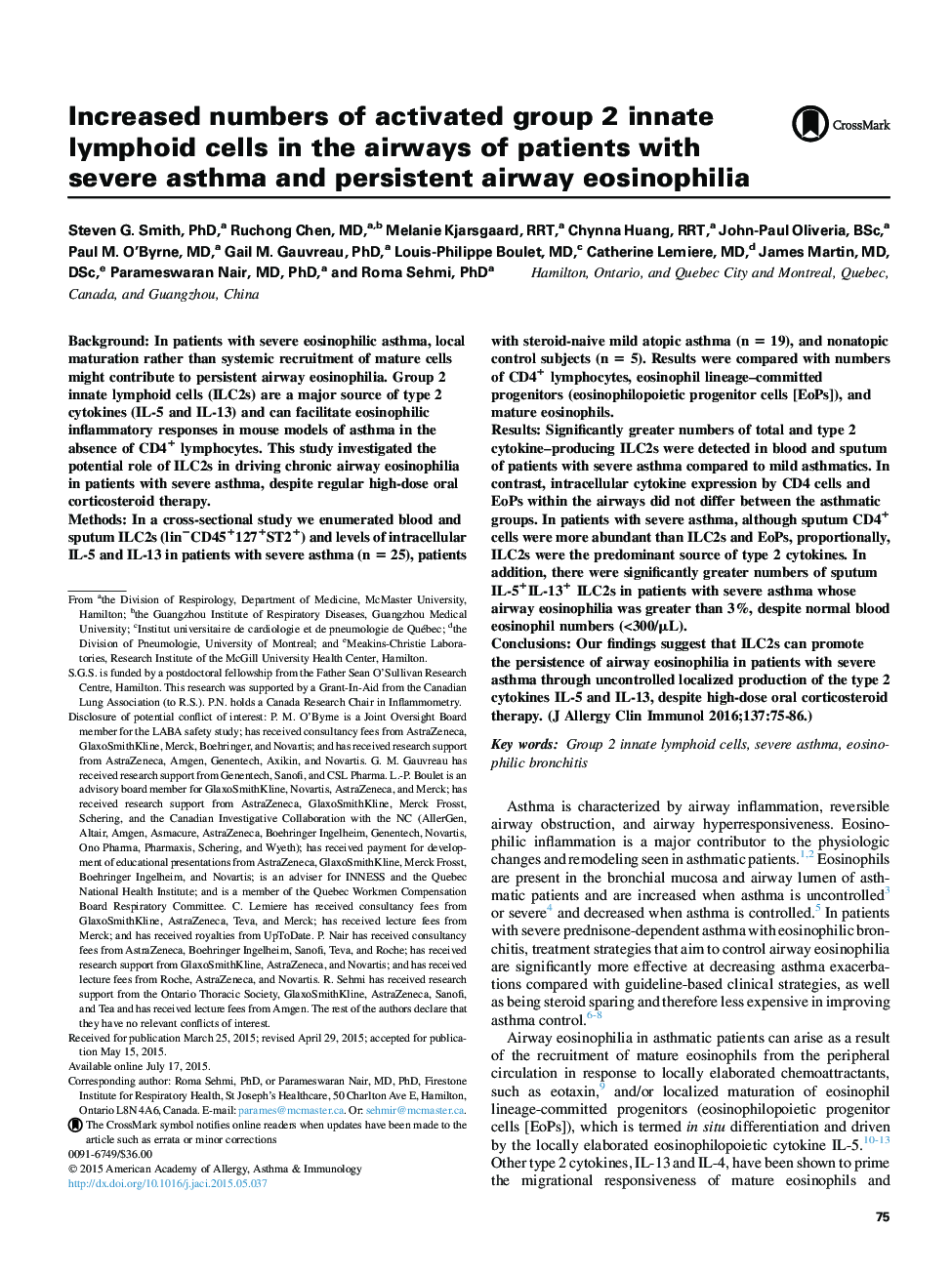| Article ID | Journal | Published Year | Pages | File Type |
|---|---|---|---|---|
| 6062833 | Journal of Allergy and Clinical Immunology | 2016 | 20 Pages |
BackgroundIn patients with severe eosinophilic asthma, local maturation rather than systemic recruitment of mature cells might contribute to persistent airway eosinophilia. Group 2 innate lymphoid cells (ILC2s) are a major source of type 2 cytokines (IL-5 and IL-13) and can facilitate eosinophilic inflammatory responses in mouse models of asthma in the absence of CD4+ lymphocytes. This study investigated the potential role of ILC2s in driving chronic airway eosinophilia in patients with severe asthma, despite regular high-dose oral corticosteroid therapy.MethodsIn a cross-sectional study we enumerated blood and sputum ILC2s (linâCD45+127+ST2+) and levels of intracellular IL-5 and IL-13 in patients with severe asthma (n = 25), patients with steroid-naive mild atopic asthma (n = 19), and nonatopic control subjects (n = 5). Results were compared with numbers of CD4+ lymphocytes, eosinophil lineage-committed progenitors (eosinophilopoietic progenitor cells [EoPs]), and mature eosinophils.ResultsSignificantly greater numbers of total and type 2 cytokine-producing ILC2s were detected in blood and sputum of patients with severe asthma compared to mild asthmatics. In contrast, intracellular cytokine expression by CD4 cells and EoPs within the airways did not differ between the asthmatic groups. In patients with severe asthma, although sputum CD4+ cells were more abundant than ILC2s and EoPs, proportionally, ILC2s were the predominant source of type 2 cytokines. In addition, there were significantly greater numbers of sputum IL-5+IL-13+ ILC2s in patients with severe asthma whose airway eosinophilia was greater than 3%, despite normal blood eosinophil numbers (<300/μL).ConclusionsOur findings suggest that ILC2s can promote the persistence of airway eosinophilia in patients with severe asthma through uncontrolled localized production of the type 2 cytokines IL-5 and IL-13, despite high-dose oral corticosteroid therapy.
